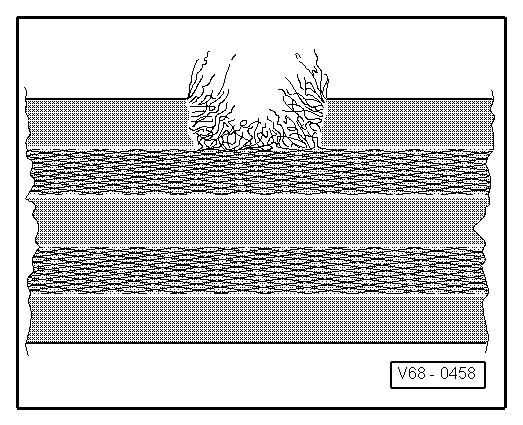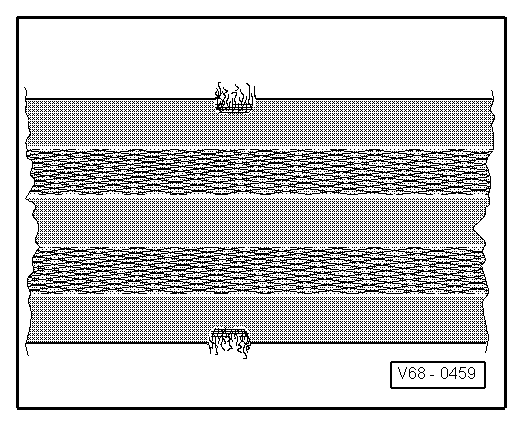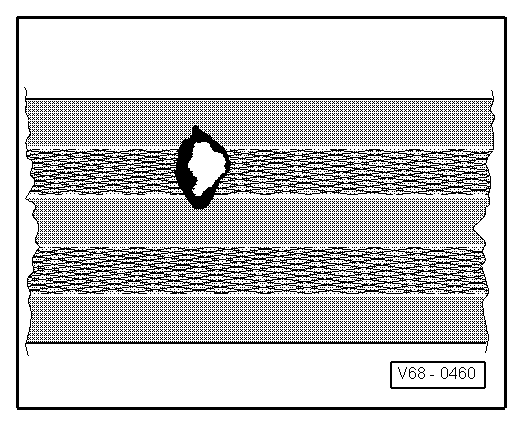Audi A4: Seat Belts, Checking
 WARNING
WARNING
The seat belt system must be inspected systematically after every accident. If damage is determined at any inspection point, the customer must be informed that it is necessary to replace the seat belt.
Inspection Points
- Check the seat belt webbing. Refer to → Chapter "Seat Belt Webbing, Checking".
- Check the automatic belt retractor (locking function). Refer to → Chapter "Automatic Belt Retractor (Locking Function), Checking".
- Visual inspection of the seat belt latch. Refer to → Chapter "Seat Belt Latch, Visually Inspecting".
- Seat belt latch function test. Refer to → Chapter "Seat Belt Latch, Function Test".
- Check the seat belt relays and belt tongue. Refer to → Chapter "Seat Belt Relays and Belt Tongue, Checking".
- Check the fasteners and mounting points. Refer to → Chapter "Fasteners and Mounting Points, Checking After a Collision".
- Check the function of the child seat anchorage for additional child seats (not for the driver safety belt). Refer to → Chapter "Seat Belt for Child Seat, Checking Child Seat Restraint Function, Market-Specific, Not for Driver Seat Belt".
 Caution
Caution
If customer refuses to have a damaged seat belt replaced, an appropriate note should be made in the maintenance schedule.
Seat Belt Webbing, Checking
Procedure
- Pull the belt completely out of the automatic belt retractor or lap belt adjustment tongue.
- Check the seat belt webbing for contamination, wash with mild soapy water if necessary. Refer to the Owner's Manual.
- If one of the types of damage (1 and 2) shown in the following is detected on a vehicle which has been in an accident - replace the entire seat belt with seat belt latch.
- If damage as illustrated under points 1, 2 or 3 is determined on a vehicle that has not been in an accident, only replace the damaged seat belt.
- 1 - Seat belt webbing cut, torn or frayed.

- 2 - Webbing loops on seat belt edge torn.

- 3 - Burn marks.

Automatic Belt Retractor (Locking Function), Checking
The automatic belt retractor has two locking functions.
- The first locking function is initiated by the belt being jerked out of the automatic belt retractor (belt extraction acceleration).
Test 1
- Pull the seat belt webbing out of the automatic belt retractor with a firm jerk.
- No locking effect - replace the entire seat belt with seat belt latch.
- If difficulties are experienced when pulling out or retracting belt, first check whether position of the belt retractor has been altered.
- The second locking function is initiated by change in vehicle velocity (vehicle-dependent locking function).
Test 2
 WARNING
WARNING
For safety reasons, the road test should be carried out on roads without traffic so that other motorists/pedestrians, etc. are not endangered.
- Fasten the seat belt.
- Accelerate the vehicle to 20 km/h and then perform a hard braking maneuver using the foot brake.
- Replace the entire seat belt with the seat belt latch if the seat belt is not locked by locking mechanism during the braking procedure.
Seat Belt Latch, Visually Inspecting
- Inspect the seat belt latch for the formation of cracks and fracturing.
- If damaged, replace the entire seat belt with seat belt latch.

